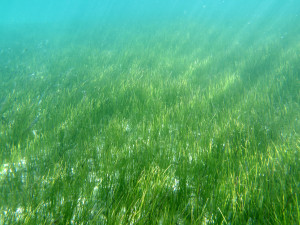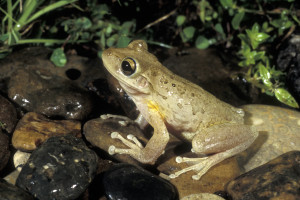First, there was not enough water. Now, there’s too much. This past year, Florida’s weather has certainly been erratic. During the winter, Florida, including the Everglades, was experiencing a significant drought. Come summer, the rain is beating down hard, so hard that certain spots of the Everglades are flooded and waterlogged. Certain species of birds and animals are leaving the area due to the excess water, including deer and wading birds.
Back in July, the water levels in the area were around 2 feet above normal. In some areas of the Everglades, there has been more than 20 inches of rain. According to the Florida Fish and Wildlife Conversation, the flooding is as bad as its ever bee this early in the summer, rainy season. The animals, who usually seek dry higher areas in the Everglades, are seeking other places, because everything is under water.
The U.S. Fish and Wildlife Service believes that animals are in crisis and some will even die. One bird that could potentially become extinct from this year’s rainfall is the Cape Sable seaside sparrow. Right now, there is around 3,000 sparrows in the Everglades, but if there population drops to below 300, it is believed they will go extinct.
Other threatened and affected species include: wood storks, indigo snakes, deer, racoons, snail kites.
In June, the South Florida Water Management District was allowed to back pump clean water into Lake Okeechobee to reduce the overflow in different conservation areas. This will lower the water one quarter inch per week. Because this is an emergency, the Florida Department of Environmental Protection allowed for this change in the water-management schedule.
These high-water levels don’t just affect the birds and animals, but the plant life and entire environment, as well. It is essential to move the water out of the Everglades for the area to be able to thrive and survive after this year’s rainy season is done.
The Everglades is a very delicate ecosystem, and small shifts in water levels or weather can truly bring damage and catastrophe to the area.
If you would like to explore this majestic place, go for an airboat tour with Captain Mitch. He’s been zipping around the Everglades for decades. You’ll see so much plant and animal life on these airboat adventures. Click here to book a trip or call 800-368-0065.
 You might know that there’s a lot of seagrass around Florida and throughout the Everglades.; there’s 7 kinds of seagrass in Florida to be exact. But, did you know that this seagrass is dying? Much of the beautiful green, flowering seagrasses in the waters of the Everglades are turning brown and dying off. Last year, National Park Service researchers discovered a 40,000-acre section of seagrass in Florida Bay that is dying. Seagrass provides food and shelter for many different species for marine life, while also maintaining water quality. If this grass dies off, animals, fish, and even humans will be impacted negatively.
You might know that there’s a lot of seagrass around Florida and throughout the Everglades.; there’s 7 kinds of seagrass in Florida to be exact. But, did you know that this seagrass is dying? Much of the beautiful green, flowering seagrasses in the waters of the Everglades are turning brown and dying off. Last year, National Park Service researchers discovered a 40,000-acre section of seagrass in Florida Bay that is dying. Seagrass provides food and shelter for many different species for marine life, while also maintaining water quality. If this grass dies off, animals, fish, and even humans will be impacted negatively. Do you know the lovely creatures that sing their song at night in the Everglades? Frogs and toads! These amphibians are no strangers to Florida, and can be spotted all over the Everglades. The wetland is home to many different species of frogs and toads, including:
Do you know the lovely creatures that sing their song at night in the Everglades? Frogs and toads! These amphibians are no strangers to Florida, and can be spotted all over the Everglades. The wetland is home to many different species of frogs and toads, including:





